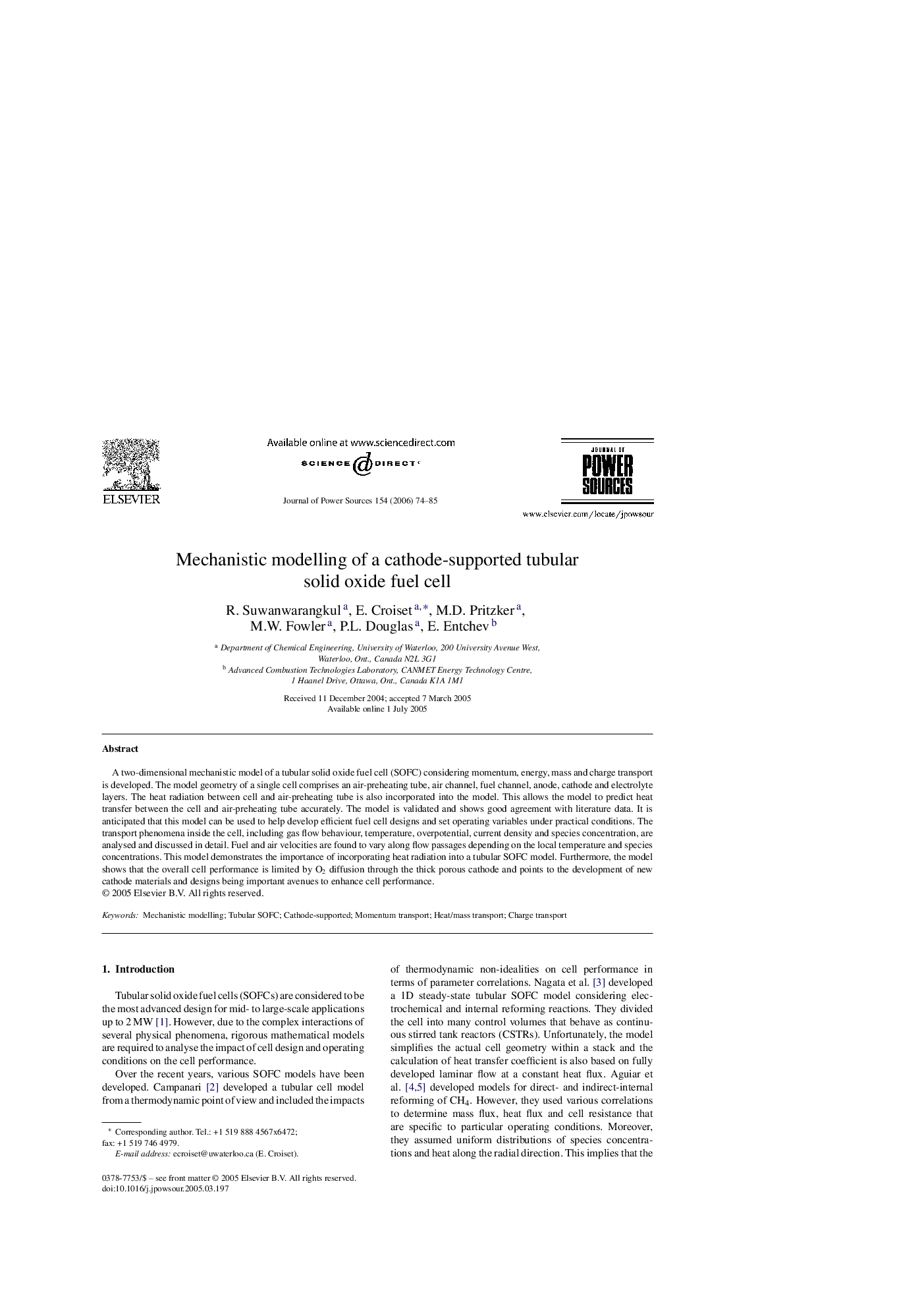| Article ID | Journal | Published Year | Pages | File Type |
|---|---|---|---|---|
| 1295106 | Journal of Power Sources | 2006 | 12 Pages |
A two-dimensional mechanistic model of a tubular solid oxide fuel cell (SOFC) considering momentum, energy, mass and charge transport is developed. The model geometry of a single cell comprises an air-preheating tube, air channel, fuel channel, anode, cathode and electrolyte layers. The heat radiation between cell and air-preheating tube is also incorporated into the model. This allows the model to predict heat transfer between the cell and air-preheating tube accurately. The model is validated and shows good agreement with literature data. It is anticipated that this model can be used to help develop efficient fuel cell designs and set operating variables under practical conditions. The transport phenomena inside the cell, including gas flow behaviour, temperature, overpotential, current density and species concentration, are analysed and discussed in detail. Fuel and air velocities are found to vary along flow passages depending on the local temperature and species concentrations. This model demonstrates the importance of incorporating heat radiation into a tubular SOFC model. Furthermore, the model shows that the overall cell performance is limited by O2 diffusion through the thick porous cathode and points to the development of new cathode materials and designs being important avenues to enhance cell performance.
